
Related
Guests
- Scott HortonNew York attorney specializing in international law and human rights. He is also a legal affairs contributor to Harper’s Magazine and a writer at The Daily Beast.
The Obama administration has released four memos from the Bush-era Justice Department that approved and provided the legal basis for the CIA’s use of torture. While President Obama has said he will not pursue prosecutions of CIA employees, he did not explicitly address the question of prosecuting the former Justice Department lawyers who authored the memos. The memos’ release comes as a Spanish court is considering bringing indictments against six Bush-era lawyers. We get analysis from human rights attorney Scott Horton. [includes rush transcript]
Transcript
AMY GOODMAN: The Obama administration released four lightly redacted memos Thursday from the Bush-era Justice Department that approved and provided the legal basis for the brutal interrogation techniques used by the CIA against terrorism suspects.
President Obama issued a statement calling for “reflection not retribution” and reassured CIA officials that they need not fear prosecution.
The so-called “torture” memos from the Bush administration’s Office of Legal Counsel were released as part of a lawsuit and Freedom of Information request filed by the ACLU. Three of the memos were authored by Steven Bradbury in 2005, then a lawyer in the Office of Legal Counsel, and one in 2002 by then-head of the office, Jay Bybee.
The memos dispassionately describe the use of tactics such as waterboarding, holding prisoners in small dark boxes, exploiting prisoners’ fears of insects, forced nudity, and shackling and depriving them of sleep for as many as eleven days. They also include extensive legal arguments as to why these tactics do not amount to torture under US and international law.
While President Obama has said he will not pursue prosecutions of CIA employees involved in special interrogations, he did not explicitly address the question of prosecuting the minds behind the memos, the former Justice Department lawyers who authored the memos. But a Spanish court could prosecute six prominent lawyers from the previous administration, including former Assistant Attorney General Jay Bybee, the author of the 2002 memo.
I’m joined now by attorney and writer Scott Horton from Washington, D.C. He’s been closely following the efforts to release these memos, as well as the Spanish case against the so-called “Bush Six.”
We welcome you to Democracy Now! Scott, let’s begin with the release of the memos and President Obama saying he will not prosecute. Talk about the significance.
SCOTT HORTON: Well, I think an important positive decision from President Obama to release them. We know that there was a struggle. We know that senior figures in the CIA waged what Michael Isikoff called a “holy war” to block their release. President Obama personally was involved in the final call. He made that call in favor of their release. The redactions were very, very modest: the names of some doctors and psychologists and CIA agents were blacked out. That’s standard procedure, no surprise there. Even the ACLU, I think, was happy to do that. By the way, we can pretty clearly identify exactly who all those people are, so it wasn’t terribly effective either.
The surprising thing was, of course, the statement that was released alongside of it that there would be no prosecution of CIA agents who relied on these memos in performing their duties. And I’d say that that outcome — most people who’ve studied this don’t expect that there ever would be such prosecution, certainly not of ground-level people at either the CIA or the Department of Defense. But there’s some very serious issues about how this is raised, in particular because this amnesty — and that’s effectively what it is — is being granted before an investigation of all the facts has been completed. And I think, in terms of proper process, it would be appropriate to lay down the facts to establish them and then make some sort of decision about amnesty.
And second point is we see everything presented in terms of the OLC memoranda and reliance on these memoranda. Well, there’s a very important report still being held at the Justice Department dealing with how these memos came to be crafted and released and the ethics of what went on there. I’m told it’s devastating. And I think that’s going to put a torpedo in the side of this legal argument.
But even aside from that, there is a very strange factual issue here. President Obama says that we shouldn’t prosecute them because they relied on these memos. But a factual review is going to show that the CIA was using these techniques from April 2002, and these memos were commissioned and written, the first of them, in August 2002, so it’s quite clear, in fact, that CIA agents were out in the field doing these things, not relying on these memos, with the memos not even being in contemplation at that time. So, this argument is a fallacy.
What’s really going on here, the CIA agents were acting in reliance on directives that came from the White House, from the National Security Council, that go all the way up the ladder to Vice President Cheney and President Bush. And I think President Obama is concerned about that linkage and that issue, and he wants to blur the picture a little bit.
AMY GOODMAN: Scott Horton, what did you find most shocking about these memos?
SCOTT HORTON: Well, the clinical detail of the discussion of the torture techniques is just astonishing. You know, I think the bugs-in-the-box instance that you cited, which we really hadn’t heard anything, before the discussion of waterboarding. But just back up and put some perspective on this. These are techniques that federal prosecutors previously charged as crimes. Moreover, in prosecutions that occurred at the end of the World War II, American federal prosecutors sought the death penalty, sought capital punishment, for people who did these things. And now we see a man who is a federal judge sitting in San Francisco writing a memo saying “wink, nod, fine with me, just go right ahead and do it.” It’s just astonishing, and I think also astonishing that that individual in particular can sit as a federal judge today when the world knows that these memos have been crafted and, in fact, when he’s the subject of a pending criminal proceeding in Spain.
AMY GOODMAN: Let me read from the document. This is the Bybee memo. It says, “In addition to using the confinement boxes alone, you also would like to introduce an insect into one of the boxes with Zubaydah. As we understand it, you plan to inform Zubaydah that you are going to place a stinging insect into the box, but you will actually place a harmless insect in the box, such as a caterpillar. If you do so, to ensure that you are outside the predicate act requirement, you must inform him that the insects will not have a sting that would produce death or severe pain. If, however, you were to place the insect in the box without informing him that you are doing so, then, in order to not commit a predicate act, you should not affirmatively lead him to believe that any insect is present which has a sting that could produce severe pain or suffering or even cause his death. [Redacted section] so long as you take either of the approaches we have described, the insect’s placement in the box would not constitute a threat of severe physical pain or suffering to a reasonable person in his position. An individual placed in a box, even an individual with a fear of insects, would not reasonably feel threatened with severe physical pain or suffering if a caterpillar was placed in the box.” Scott Horton, your response?
SCOTT HORTON: Well, we’re seeing the realization of two famous pieces of literature, aren’t we? George Orwell’s 1984 with the rat — remember, the rat was selected after psychoanalysis of the subject revealed that he had a fear of rats, so this was being used to terrorize, quite literally, the individual — as well as Terry Gilliam’s filming of Brazil, where we know again study of fear was used to drive, to craft special techniques. And that’s the predicate paragraphs, prior to the ones you just read, suggest that with respect to this prisoner, the diagnosis of psychiatrists and psychologists who had studied his case was that he had an irrational fear of insects. So let’s use this fear to unhinge him.
So, the other thing I think we should note, going back here, is this shows the central role played by healthcare professionals in the crafting and implementation of this entire process. It’s clear from reading these memoranda that doctors and psychologists are present at every stage along the way, supervising what’s going on, but also suggesting and refining the techniques to make them more terrible.
AMY GOODMAN: You know, Scott Horton, I’m headed to Spokane. We’ll be broadcasting from Spokane, Washington, on Tuesday, where Mitchell Jessen & Associates is. Can you talk more about psychologists?
SCOTT HORTON: Well, I think, you know, looking at the redactions, the things they pulled out of the memoranda, it’s fairly clear, as far as I’m concerned, that Mitchell and Jessen are involved, that they’re behind those blackouts at several places. At least they’re prime suspects.
But, you know, it’s clear from these memoranda that these psychologists, consultants, who studied the SERE program and other classical techniques of torture, because, you know, many of these things have been used by — and how did they come into the SERE program to start with? Because the SERE program was focused on techniques that had been used by the Soviet Union, by communist China, by North Korea and North Vietnam, a great pack to be emulating. Those were the techniques against which the SERE program was supposed to insulate, so those are the techniques that SERE incorporated and used as its training program. So, in effect, what we’re getting here is a filtered reproduction of communist techniques used by the Soviets, the North Koreans, the Chinese and the North Vietnamese, and psychologists are working along the way to make them more effective.
There is no consideration given to the Hippocratic Oath, the obligation to do no harm. And indeed, there’s an ethos that runs through this of a duty to the Central Intelligence Agency to make its work more effective, not to the subject or to the prisoner.
AMY GOODMAN: We’re going to come back to Scott Horton in a minute, as we talk about the release of four government memos from the Bush administration years known as the torture memos. I also want to ask you about the latest news on the Spanish case. Scott Horton is an attorney and blogger. This is Democracy Now! Back in a minute.
[break]
AMY GOODMAN: Right now we’re talking to Scott Horton, the human rights attorney and blogger. We’re talking about the latest news on President Obama releasing four lightly redacted memos from the Bush-era Justice Department, but saying that CIA officials need not fear prosecution. I wanted to go for a minute to what former CIA director Michael Hayden had to say on MSNBC Thursday. This is before the release of the memos.
MICHAEL HAYDEN: On balance, the agency’s view, certainly my view, is that on balance, the release of the memos harms American security, and therefore I think the best course of action would have been to have kept them classified.
The President, when he issued his executive order tying all American agencies to the Army Field Manual, also launched a six-month study to determine whether or not the Army Field Manual and the techniques, the nineteen techniques contained therein, are sufficient in all cases facing the republic.
The degree to which we make these techniques public, that we tell our enemies the outer limits of American interrogation techniques, it moots the study that the President directed, because it will effectively take these techniques off the table, because our enemy will know all of our approaches to him. So there are a variety of reasons that I think it would have been best to keep the techniques secret. That’s just one of them.
AMY GOODMAN: Scott Horton, your response?
SCOTT HORTON: Well, I think if we have a little bit more candid Michael Hayden, we’d hear him saying something else. In fact, it was reported in Bart Gellman’s book Angler that around the time of the 2004 elections, he had a very, very strong focus on and fear of prosecution, if the things he was involved with should become public, a matter of public knowledge. And I think that’s what’s in the back of his mind here. I don’t think it’s national security at all.
In fact, these techniques are very well known. The Red Cross report, which was published — you had Mark Danner on your show talking about it — described all these techniques in terrific detail. I mean, so it was in a sense no surprise when we saw these memos. They were describing the techniques we knew and we anticipated based on the Red Cross’s own report — so no surprise, no news — and concerns by General Hayden for his own hide.
AMY GOODMAN: We just got this report from Spain, Scott Horton. Spanish prosecutors have “formally recommended against an investigation into allegations that six senior Bush administration officials gave legal cover for the torture of terror suspects at Guantanamo Bay. While their ruling is not binding, the announcement all but dooms prospects for the case against the men going forward.” That, a report from the Associated Press. Scott Horton, can you explain what you understand at this point?
SCOTT HORTON: Well, the Associated Press is giving you extremely faulty legal analysis, because a decision as to whether the case will go forward rests entirely with the investigating judge. The Spanish system is not like the American system, where prosecutors decide who and when to bring cases and who to prosecute. In the Spanish system, the prosecution is managed by an investigating judge. In this case, it’s Baltasar Garzon. And you may recall, he handled the case involving Augusto Pinochet, and he did that against the stern opposition of Spanish prosecutors, I think which shows you the weight that that recommendation may hold with him in his court.
But there’s a different consideration to weigh in here, as well, and that is that this is a statement that was announced by the prosecutors at the Audencia Nacional in Madrid, and we know, in fact, that those prosecutors who have made this recommendation not to go forward in fact concluded that the case should be prosecuted. They prepared a thirty-seven-page memorandum — and I’ve discussed, I’ve talked with several people in Madrid who have read it — that laid out the case, showed how it could fairly easily be brought, how it involved a joint criminal enterprise, how it could be sustained on the basis of documents, including some of those that were released yesterday. And that decision by the career prosecutors was overridden in a political act by Spain’s attorney general, who’s a political figure. He was a member of the cabinet of Prime Minister Jose Zapatero.
Moreover, the attorney general’s decision, which was announced yesterday morning in Madrid, came after several days of high-level discussions between Washington and the Zapatero government, during the course of which, I’ve been told, the Obama administration suggested very strongly that the pendency of this case was inconvenient and that it would be viewed as a great favor by Washington if Zapatero’s government could do what was within its power to shut this down. And I think what we see here is an accommodating nod from Jose Zapatero.
So it has really nothing to do with justice, and it has nothing to do with the merits of the case. It’s a political act. And it’s certain to be understood by the judges of the Audencia Nacional as a political act, which means I don’t think it really forms much of a barrier to the prosecution going forward.
AMY GOODMAN: Scott Horton, I want to thank you for being with us, a blogger and lawyer who’s been following these cases very closely, speaking to us from Washington, D.C.

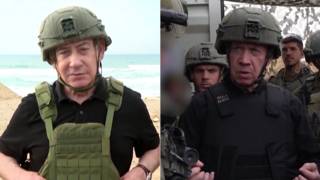
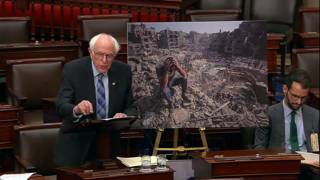
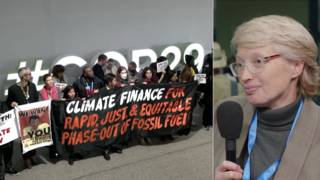






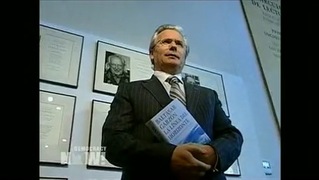
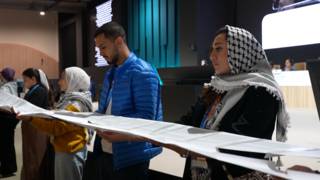
Media Options